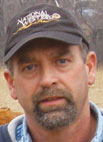
Bob and Marian Williams met while in high school, though Bob readily admits he had to ask his future wife for a date three times before she accepted and went with him to a rodeo in Siloam Springs, Ark.
“That first date was on June 16 and we have now been married for 49 years,” Bob recalled. “We don’t even by each other Christmas presents because we have Christmas every day of the year just by being together.”
The couple began with a dairy farm because they liked year-round income, wanted to work for themselves rather than somebody else and had no objections to the rigorous dairy farming lifestyle.
Consequently, when Herman Isaacs was ready to retire, they rented his 80 acres and bought his 44 dairy cows. They milked 106 cows twice a day, with an additional 62 cows belonging to his Bob’s brother J.B.
The milking parlor consisted of three stalls, which required each cow to be admitted and released individually. The process took a total of 12 hours every day.
Three years later, 98 acres between Westville and Chance, Ark., came up for sale, with the owner retaining an additional two acres, which included his house and a barn.
The couple learned the dairy industry through hands-on experience. The couple built a dairy parlor on their new, but empty land with six cows per side and automated milkers.
They also chose a higher site to eliminate the mud issues prevalent on the rental property. The couple and their three children lived above the parlor for three years while their home was being built.
“Our children always said the sound from the milkers was a lullaby that put them to sleep,” Bob said with a laugh.
The couple now owns 260 acres, divided between two farms.
At the dairy’s peak, the Williams’ herd had 250 cows, with milking occupying only eight hours a day at a rate of 60 cows per hour.
While the herd was predominantly Holstein, in the beginning they had a few Brown Swiss, but found the breed difficult to work with. Bob said the calves wouldn’t take a bottle and the cows’ udders were too big, significantly reducing the number of productive years.
“After talking around, I found out others had the same problem with the breed and I never bought another,” Bob said.
Bob and Marian use their own heifers for replacement and raised steers as commercial beef.
Five years ago, the couple decided it was time to slow down, and wanted more time to watch their five grandkids play ball.
“Dairy was good to us, but it was time for a change,” Bob said.
In spite of the fact that their five grandchildren were unhappy about losing the dairy cows and going to the dairy parlor, Bob and Marian sold off the dairy herd and all of the equipment so, according to Bob, they couldn’t even be tempted to go back.
When switching to a commercial beef herd, Bob bought purebred Herefords and Angus rather than crossbreeding some of his Holstein cows because he believes half Holsteins produce too much milk, an expensive inefficiency especially considering the size of a Holstein cow and the feed that it takes to support that size.
The couple maintained two herds, one black and one red. When they lost 80 acres of leased ground, they downsized from 150 to 130 head and sold off the Angus herd.
“The decision was easy,” Bob said. “When it gets hot, the Angus are lying in the shade while the Herefords are out eating grass and growing.”
Another factor was that in his area oaks are dying at an alarming rate from red oak borers.
“You have to adapt the current environment, and my current environment has shade only by the fence rows,” Bob said.
Bob is using Red Angus bulls on the Herefords to produce red motley calves, the couple has 32 heifers to calve this fall. He selects bulls for milkability a EPD level of 24 or more and for producing heifers with good udders. He keeps his bred heifers at the other farm and will bring them over to two small pastures when they are ready to calve. Since heifers sometimes have difficulties, the couple wants to keep a close watch on them.
Some habits die hard and two that have carried over from the dairy to the beef herd are checking every animal twice a day and retaining dairy level protein grain, 16 percent, rather than the more traditional 12 percent.
Bob believes the higher protein develops height and structure and not as much fat which is what he is looking for in his commercial herd. He weans his calves at 6 months, provides 3 to 4 pounds of grain per day per animal, and sells the calves about two months after weaning.
Bob hays 80 acres and at one time utilized chicken litter for fertilizer, but has switched to commercial fertilizer because of availability and better value. He broadcast sprays in the spring and spot sprays for thistles and dock. His pastures are mostly Bermuda with some fescue.
Bob has used government programs for waterers and cross fencing. He uses rotational grazing and moves the animals every two weeks. Though he has 10 acre plots he usually keeps the gate open so the cattle graze 20 acres at a time. He also allows them to graze the hayfield which is divided into two 40 acre plots.
“Marian and I always work together, and she is my partner as well as my wife,: Bob said. “My two daughters, Jacke and Rhonda, and my son, Murray, have really earned their inheritance by working with us when they were children and helping us whenever we needed as they became adults. Family is important to us and has created this farm.”







